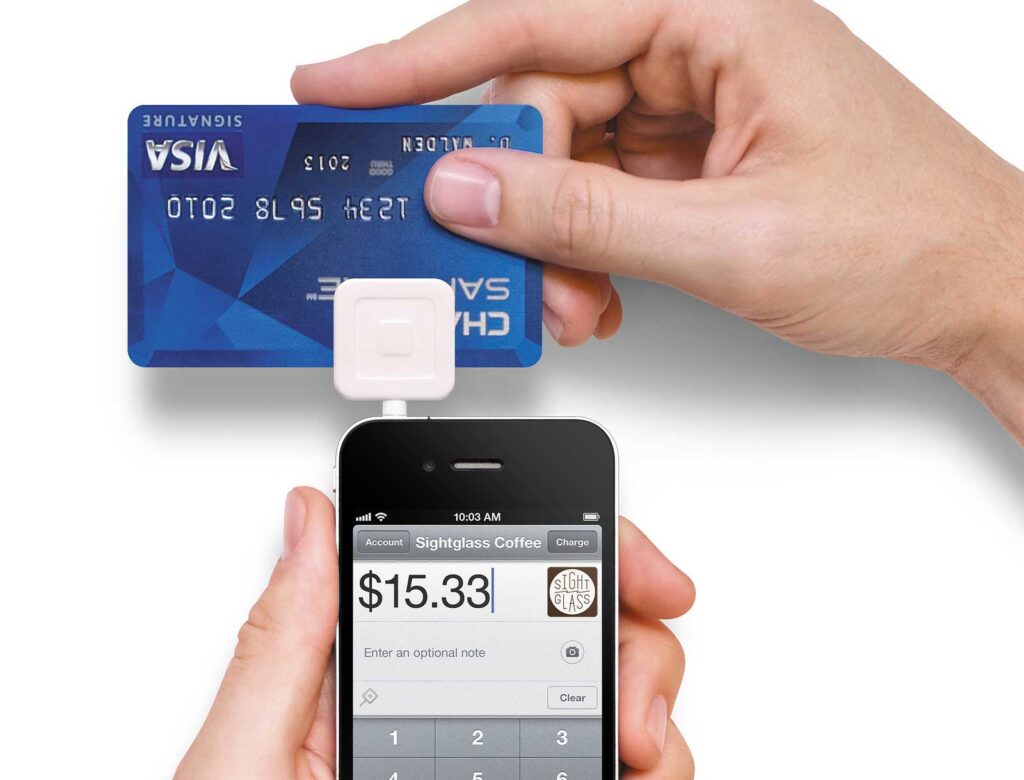These days, the payment processor Square seems to be everywhere, from the coffee shop to your neighbor’s yard sale to national franchise businesses. But how does square reader work? Square mobile payment is an ecosystem that has made many kinds of transactions possible, but it is essential to understand how it works: Using a tool means knowing how it works.
The power of Square and its potential to help small businesses process more transactions means that in many cases, people cannot afford not to know how it works.

How Does Square Reader Work
Square mobile payment works in a way that is similar to most other mobile payment methods, but it is unique in the world of payment processors for many reasons.
The Square reader is at the center of the Square ecosystem. This device works as many other credit card readers do: The card is swiped, inserted, otherwise aligned with the device such that the device can glean the card’s data. Next, the device transmits this data in a secure way in order to check that the transaction can be processed. Understanding how does Square reader work is key to utilizing it effectively.
This results in an authorization (or not, depending on whether the transaction will go through). At the end of the day, or when the merchant runs the batch of transactions (which might occur at various time intervals, such as every other day, every four hours, etc.), and then Square settles the funds by depositing them into the business’s bank account within one to two business days; Square also offers options that, for a fee, could settle the funds more quickly.
Why have so many been embracing Square as their payment processors?
First, the ecosystem is sleek, elegantly designed, and easy to use. It fits in with the minimalist aesthetic of Apple products. While this is hardly a factor impacting business decisions, it is visually appealing in the way that a giant cash register or clunky card reader is not. It can easily fit in with the context of a modern, minimalist boutique, a coffeeshop, or even a vet’s office.
Similarly, and more importantly, the Square ecosystem is largely portable. In its simplest form, it can be used with the headphone jack of a phone (assuming that the phone still has such a jack, of course) or with a card reader that connects via Bluetooth.
This gives the system a portability that has seldom been possible with other payment processor systems.
In practice, this means the babysitter can bring it with them to appointments, that customers may not have to get out of their cars at the gas station, that a therapist can swipe a patient’s card right in the office, and more.
The entire ecosystem has many different configurations, such as bases that pivot iPads towards and away from customers, that ensure there is a way to make it work for every type of business.
Square’s fees are simple
Finally, and most compelling, is the fact that Square charges much lower transaction fees than competitors. The company boasts of rates such as 2.75% per non-manually entered card, and 3.5% + fifteen cents for transactions that are keyed-in.
For many small businesses, this is a deal-maker when it comes to accepting card payments: Competitors in the payment processing industry tend to charge more than Square’s fees, which is why so many small businesses have traditionally eschewed card payments.
What cards does square accept?
After exploring how does Square reader work, we now delve into what cards does square accept. One particularly appealing feature of Square is that it accepts mobile payments (see square accepted cards). While one may think that mobile payments reflect the portability of the Square ecosystem, instead they reflect financial transactions that can occur through a mobile device, rather than on a physical card.
They occur via mobile wallets, which simply reflects the mobile application that is used to facilitate these transactions. Apple’s “Wallet” (Formerly Passbook) is the most literal example, though Android users may be most familiar with Android Pay or the “Cards” app.
Mobile payments are also known as NFC payments, and Square has been at the vanguard of this movement. Square’s contactless / chip reader device can read both EMV (chip-enabled) cards as well as mobile payments.
The contactless version utilizes Radio Frequency Identification (RFID) in order to transmit data in a secure way. In order to use the device for the former, the card must be inserted; in order to use the Square device for the latter, the mobile device must be read by the Square device.
For iPhones, the user simply holds the mobile device with the Apple Pay app open and the relevant screen ready, and ensures that his or her fingerprint is read by Touch ID.
Android and Samsung phones work similarly, but without the biometric security feature. The concept is quite similar to scanning a digital boarding pass for an airplane or a ticket for a concert – but with a greater amount of digital security.
While a fully technical description of what happens would not only be very long, but also fairly dull, the precise chain of events tends to be the digital equivalent of a handshake – albeit the type in which one person palms secret information to the other in a way that is not detectable to outside viewers. Think of old spy movies and the complex, tortuous ways in which the spies would try to encrypt information…and now make it less interesting.
That pretty much describes how the Square reader gleans the data from the mobile payment device. Because the Square reader is equipped with RFID, the handshake occurs between the card reader and the data sent from the mobile device through a specialized RFD process called NFC (Near Field Communication).
In essence, a mobile payment occurs by sending the same sort of data as with a traditional debit or credit card does, but the data is contained digitally and the only physical conduit necessary is the mobile phone.
Unlike when one uses a physical card, which carries with it the risk, however marginal, of someone else in line seeing the card number, expiration date, and CVV number (or gleaning them if the customer fumbles with the card, for example), the data is transmitted in an encoded fashion.
Furthermore, the loss of or damage to the mobile phone does not necessarily mean that the account information should change as the app can be killed remotely.
In essence, Square has done an excellent job of integrating these secure and fast mobile transactions. Considering that few other payment processors have integrated the mobile payment system so well, Square remains a major competitor for payment processing.
For some, this may be surprising, as so many others have long been in the payment processing space.
Skeptics may wonder if Square is too good to be true. The company earns its revenue both from the transaction fees as well as from the different devices it offers.
Moreover, it provides powerful business services, such as capital access (loans) or payroll processing. It can provide analytics, develop invoices, facilitate employee management, integrate an online store, develop an appointment system, and integrate customer engagement. Square also owns the peer-to-peer payment app called Cash.
This part of Square’s empire earns money by charging businesses that allow customers to use the app; Cash also makes money by charging customers more when they desire faster deposits.
Overall, Square works in a way that is hardly different from any other payment processor. However, its innovation and value proposition lie in the fact that it has created a horizontally integrated business, with solutions for small businesses that enable growth via financial, payment / point of sale, and marketing services.
The company has facilitated access to powerful business tools, but in a way that is accessible to small businesses and to the technologically challenged alike.
Moreover, Square’s a la carte approach means that the mom who runs a spectacular yard sale and sometimes picks up freelance tutoring gigs is not paying for growth-oriented services like employee management; similarly, the clothing boutique that is opening a new location on the other side of the city and scaling up its online store will not have to research or outsource tasks like marketing and payroll.
For the in-home cleaner, landscaper, plumber or massage therapist, or the corner store that did not want to lease a credit card terminal, Square can be a dramatic game-changer. In all of these cases, Square both meets their needs and allows them to pay only for what they need.
Square has remained competitive in a crowded market space particularly because of its integration of mobile payments compared to others like PayPal and its Venmo service, Shopify, Payment Depot, and Payline.
In addition, the basic version of Square does not have a monthly fee (though various services do incur a fee). While competitors have focused on value propositions for specific industries and types of businesses, such as Shopify’s emphasis on eCommerce and the use of its services, Square has remained a nimble enough ecosystem to maintain a broad level of appeal in an incredibly diverse array of settings.
Thus, in the macro sense, how does square reader work? Square has worked because of its ability to create an approach to business that is horizontally integrated as well as adaptable to a broad array of circumstances and business types.




